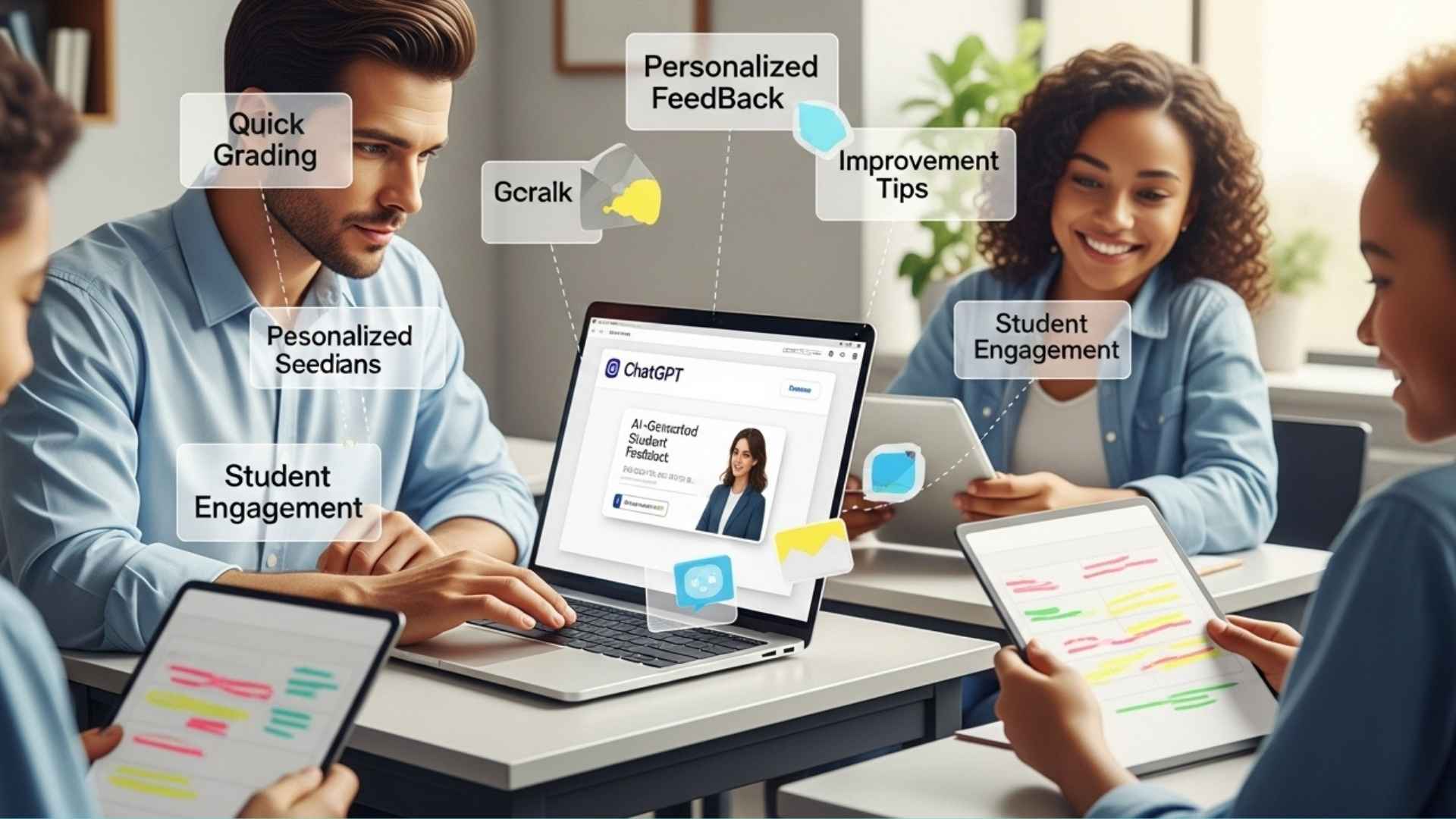As Artificial Intelligence (AI) takes on an increasingly larger role in society, its influence is naturally extending into the realm of Higher Education.
The integration of AI in higher education frequently sparks concerns, particularly regarding Academic Integrity. There is a valid fear that students might use AI tools to complete assignments and homework with minimal effort, potentially undermining the educational process.
However, when properly and optimally leveraged, AI and higher education form a powerful synergy that can significantly enhance the quality of education students receive. AI’s transformative impact extends far beyond the classroom walls.
Expanding the Scope of AI in Academia
AI is driving powerful advancements across the academic landscape:
-
Improving Administrative Functions: AI enhances the efficiency of managerial tasks, freeing up professors and administrators to spend more time supporting students effectively.
-
Augmenting Learning: AI can create realistic, risk-free simulations, such as clinical scenarios in healthcare, thereby strengthening learning outcomes.
These innovations actively prepare students for evolving sectors, like healthcare. For example, institutions like the University of St. Augustine for Health Sciences (USAHS) are embracing this change by integrating technologies such as:
-
AI-based Simulations
-
Chatbots
-
Virtual Reality (VR)
-
Remote Patient Monitoring
By adopting these technologies, institutions are enhancing student instruction and clinical readiness. As AI reshapes higher education, the academic world must seize its full potential. Since students are already embracing these tools, institutions that integrate AI thoughtfully and judiciously into education are certain to reap significant benefits.
Massive Opportunities for AI in Higher Education
In the current landscape, there are tremendous opportunities to use AI in higher education, primarily by leveraging its capability to expand the learning experience for individual students.
Here are the key areas where AI can best demonstrate its power:
1. Personalized Learning Experiences
Given that every student has a unique learning style, AI empowers professors to easily craft personalized learning experiences that boost student engagement.
-
Adaptive Learning Platforms: AI-driven platforms can tailor lesson plans to a student’s specific needs.
-
Interactive Support: They can provide extra help where needed, creating a more interactive and focused learning model.
-
Tutoring Services: AI can be used in tutoring services to provide immediate feedback and guidance, making the learning experience more personal.
2. Streamlined Administrative Tasks
Administrative functions—such as reviewing admission applications, grading assignments, and scheduling—can be repetitive and time-consuming.
By bringing AI into higher education, these tasks can be automated, allowing educational leaders to focus on core responsibilities like student engagement and instruction.
Furthermore, AI chatbots can efficiently handle common student inquiries, enabling educators to dedicate more time to students who require individual attention.
3. Advanced Analytics for Student Success
AI in higher education can be used to proactively identify students at risk of underperforming or dropping out.
-
Early Intervention: This early detection allows for timely interventions, significantly boosting a student’s chance of success.
-
Continuous Tracking: AI educational tools can continuously monitor a student’s academic progress, highlighting areas that need improvement and alerting relevant parties. This allows professors, counselors, and students themselves to take preventative measures for academic achievement.
4. Generative AI in Content Creation
Generative AI offers a solution to the creative challenges instructors face when developing instructional materials, practical exercises, and virtual labs.
By delivering flexible, individualized experiences, Generative AI enhances both student learning and creativity. The conclusion is that such engaging and rich educational content strengthens education and improves overall learning efficacy.
Key Benefits of Implementing AI in Education
The collaboration between Artificial Intelligence and higher education holds immense promise. By personalizing a student’s learning experience and assisting in content creation, AI can:
-
Boost Student Engagement.
-
Improve Learning Outcomes.
This leads to greater academic success, higher retention rates, and the promotion of essential reasoning and critical thinking skills.
1. Creativity and Clinical Readiness
When AI is integrated, the scope for creativity becomes nearly limitless. AI can:
-
Create Innovative Materials: Generate novel instructional materials, practical exercises, and virtual labs.
-
VR Integration: Combining AI with Virtual Reality (VR) allows for real-world healthcare simulations, preparing students for clinical challenges. This builds confidence, problem-solving abilities, and clinical readiness in future healthcare professionals.
2. Inclusive Education and Breaking Down Barriers
AI facilitates Inclusive Education by supporting those with unique learning styles.
-
Tailored Instruction: AI identifies a student’s preferred learning style and adapts the lessons accordingly.
-
Accessibility: It helps make educational resources more accessible to students with disabilities. AI’s adaptive capabilities highlight learning challenges, enabling instructors to provide a highly customized learning model.
-
Language Barriers: AI reduces language barriers, giving a broader range of students greater access to education.
The Challenges of the AI Era: Risks and Ethical Concerns
While incorporating Artificial Intelligence into higher education offers benefits, the inherent challenges and ethical considerations naturally lead to hesitation. The integration of AI into education carries risks, but educators, particularly health science professionals, have an opportunity to lead this AI revolution responsibly.
1. Data Privacy and Security
One benefit of AI is its ability to personalize learning and assist with grading. However, this raises concerns regarding the protection of student data. Using AI tools without student consent, especially, can lead to data security issues.
2. Equity and Access
The digital divide already exists in higher education, and AI could potentially widen this gap.
-
Unequal Access: While AI tools are invaluable for supporting learning, underserved populations may lack the necessary technology to access these services.
-
Unequal Opportunities: Unequal access to AI tools creates disparities in learning opportunities, resulting in some students not benefiting from the same resources.
3. Academic Integrity and AI Misuse
A major apprehension surrounding AI and education is the threat to academic integrity.
-
Hindering Learning: When students use AI to generate homework, they bypass the actual work, which is not only a form of plagiarism but also hinders their learning capability.
-
Diminished Skills: AI may be seen as a shortcut, potentially impairing students’ critical thinking skills.
In addition to creating clear policies against misuse and plagiarism, universities should prioritize higher-order learning and problem-solving using Generative AI. This requires evolving assignments; for instance, what once tested a student’s analytical and creative capabilities (an essay) may now only measure their ability to use tools like Microsoft Copilot or ChatGPT.
Generative AI’s Potential: Beyond Information Recall
Generative AI presents an excellent method for creating new Educational Content in higher education. The result is the provision of high-quality education that engages students and boosts their motivation.
Using Generative AI, educational institutions can create highly realistic, real-world scenarios for fields like health, engineering, and more. This might involve simulating a medical case or allowing students to explore an engineering challenge.
Generative AI provides boundless possibilities for student learning, ensuring they are confident in their skills when they transition to the workforce. It also allows education to be restructured:
-
Instead of relying on Information Recall, Generative AI helps students focus on Higher-Order Learning and Problem-Solving. This ensures they utilize their full capabilities.
-
AI serves as a tool to augment critical thinking and creativity, rather than replacing them entirely.
The Future of AI and Education: Smooth Transition to Professionalism
When effectively implemented, Artificial Intelligence has the potential to significantly enhance higher education, preparing students for a smoother transition from academic life to professional careers.
One key benefit AI enables is the creation of Virtual Reality (VR) and Augmented Reality (AR) learning environments. This allows students to practice their skills in a safe space without the risk of harm. Health science students, for example, can practice patient care in real-life simulations.
Practicing these scenarios boosts student confidence and readiness for the real world, making the post-graduation transition easier. AI also facilitates Hybrid Learning Systems, which combine instructor-led lessons with technology. Instructors can integrate their lectures with AI-powered tutoring systems and assignments, offering students a richer array of practice.
Ultimately, integrating AI into higher education will lead to a shift that places a greater emphasis on Higher-Order Thinking and Complex Problem-Solving. Students will need skills that go beyond simply remembering facts.
Also Read: Best AI Tools for Teachers to Improve Teaching in 2025
The Bottom Line
When integrated in the most optimal way, Artificial Intelligence has the power to transform higher education. Whether by handling repetitive administrative tasks or customizing learning for individual students, AI is highly beneficial.
Incorporating AI into the curriculum provides limitless educational possibilities, increasing students’ confidence in real-world challenges and preparing them for a seamless transition into the workforce.
However, the key to AI in higher education is appropriate application. Ethical concerns remain regarding the sharing of student data, and institutions must be mindful of equitable access, ensuring the digital divide doesn’t limit the use of these powerful tools.




